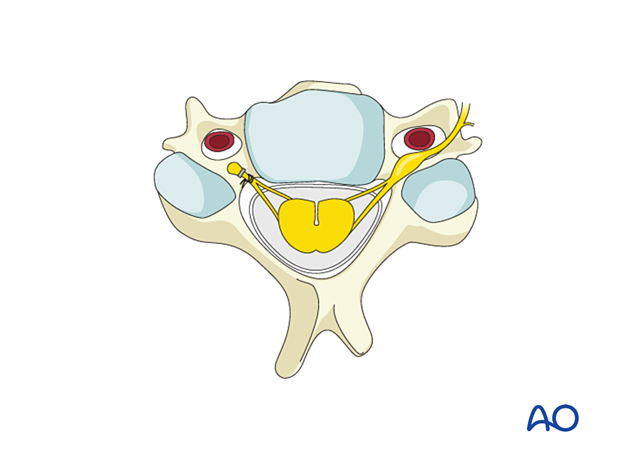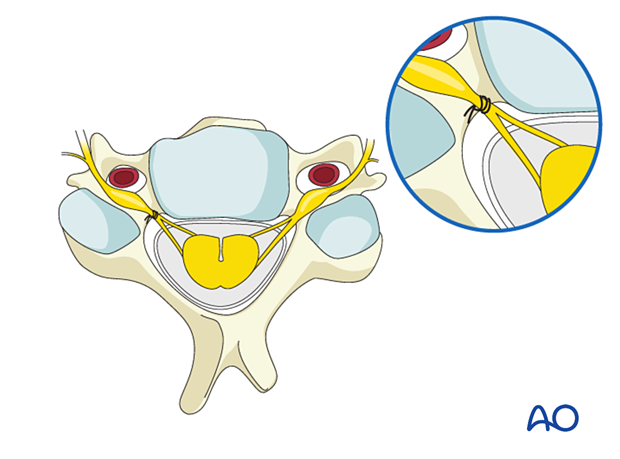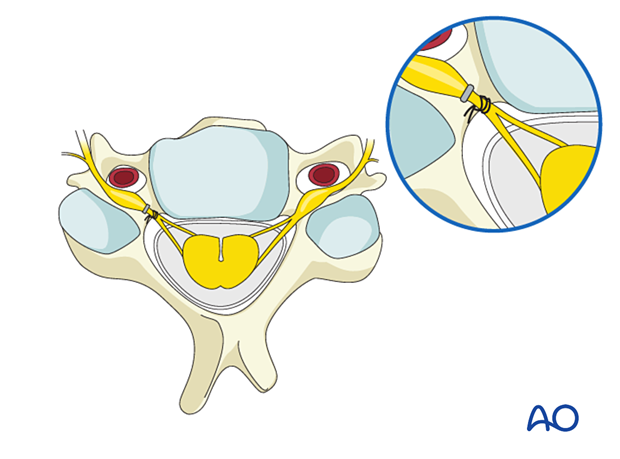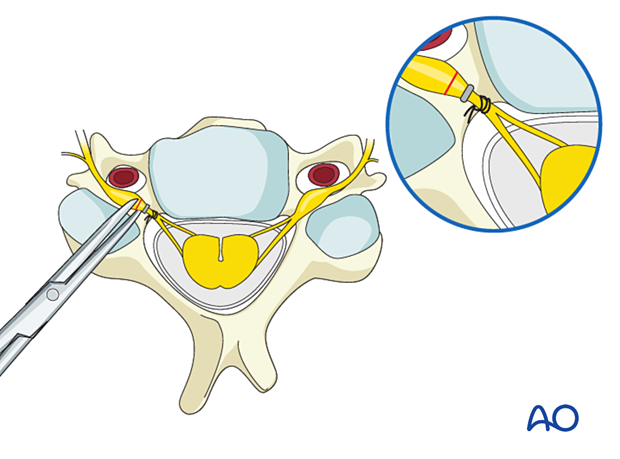Ligation of nerves
Ligation of nerves is sometimes necessary to deliver a primary tumor without entering it.
Given the potential morbidity of ligating a nerve, a shared decision-making process is essential.
Some patients won’t accept the proposed morbidity to achieve a negative margin.

To decrease the risk of neuropathic pain, the nerve should always be ligated proximal to the dorsal root ganglion (DRG).
The nerve should be ligated in a watertight fashion to reduce the risk of a CSF leak.
A silk tie is used and a hemoclip can also be applied.

Identify the spinal nerve root and the dorsal root ganglion.
Using an appropriate instrument, pass a suture tie around the spinal nerve proximal to the DRG and as close to the dural takeoff as possible.
Tie the suture.

A hemoclip can be used distal to the suture to decrease the risk of suture slippage.

Cut the nerve distal to the suture or the hemoclip using scissors or a blade.
The suture can also be kept and used to mobilize the thecal sac.













